The Department of Home Affairs’ June quarter student visa statistics, released this week, reported a massive 34% increase in visas granted to Indian international students in the 2018-19 financial year:
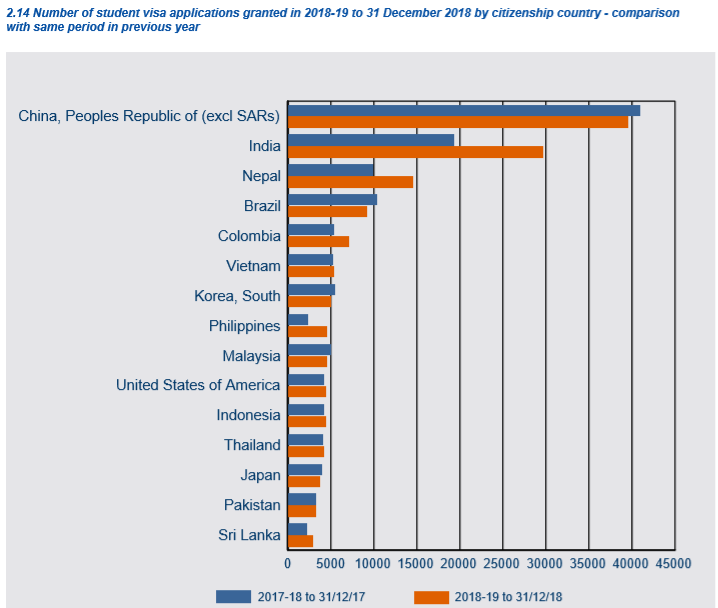
Moreover, the number of Indian student visa holders in Australia grew by 35% in 2018-19 to a record high 95,000, with Indian students fast catching-up to first placed China:
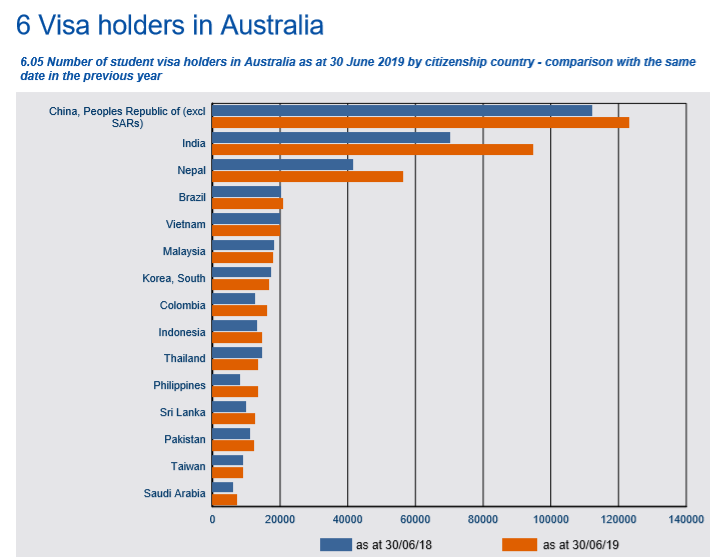
Separate international student enrolment data, released by the Department of education, similarly reported a 29,000 (39%) surge in Indian student enrolments in the 2018-19 financial year to a record high 104,000:
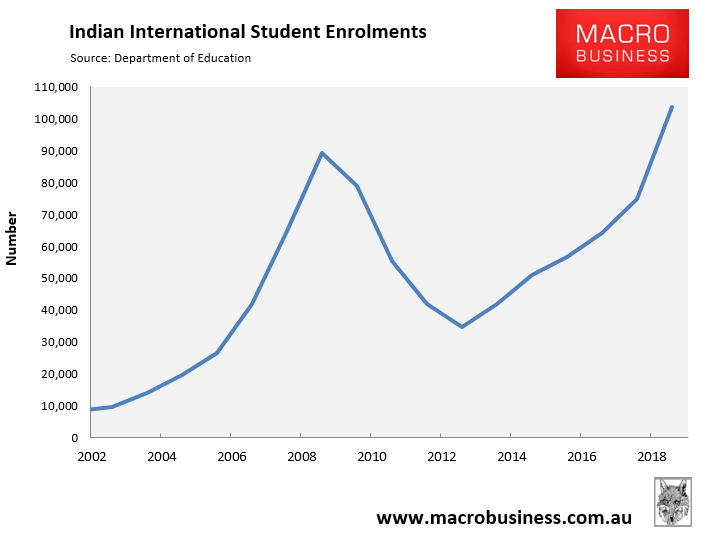
While Indian enrolment numbers are unambiguously booming, and have become the primary growth market for Australia’s education industry, visa rejections are also running at extraordinarily high levels when compared against other source nations.
As shown in the next table, the Department of Home Affairs rejected roughly one-in-ten Indian student visa applications from within Australia over the past year, well above the circa 5% rejections across all source nations:
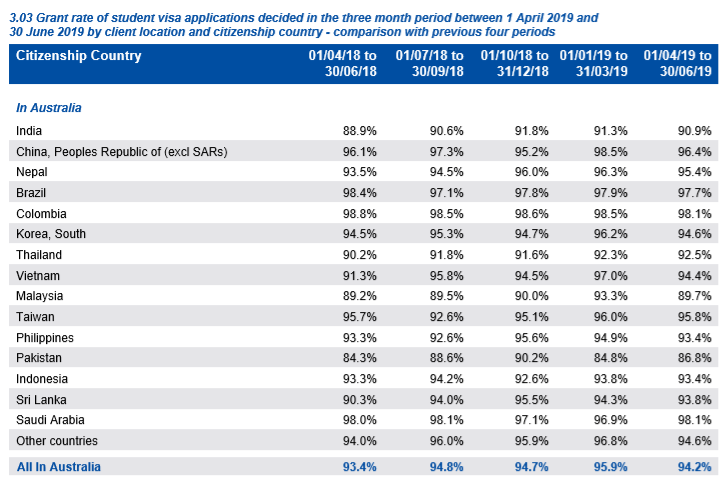
Rejections are much higher for student visa applications originating from outside of Australia, with 20% to 30% of applications from India rejected over the past year, roughly double the average from all source nations:
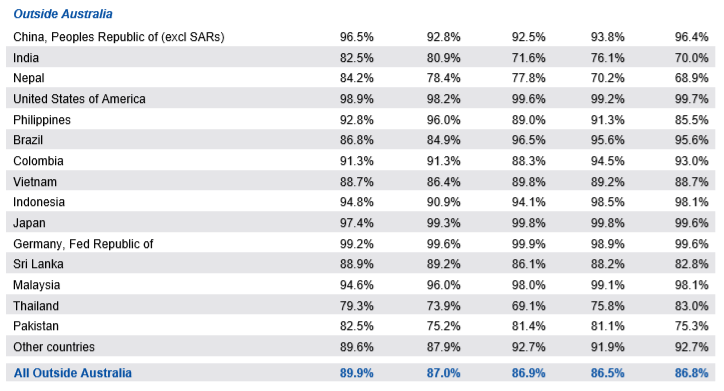
The next chart shows the situation over the second quarter of 2019, and shows that visa rejections are generally much higher for Indian students than most other source nations:
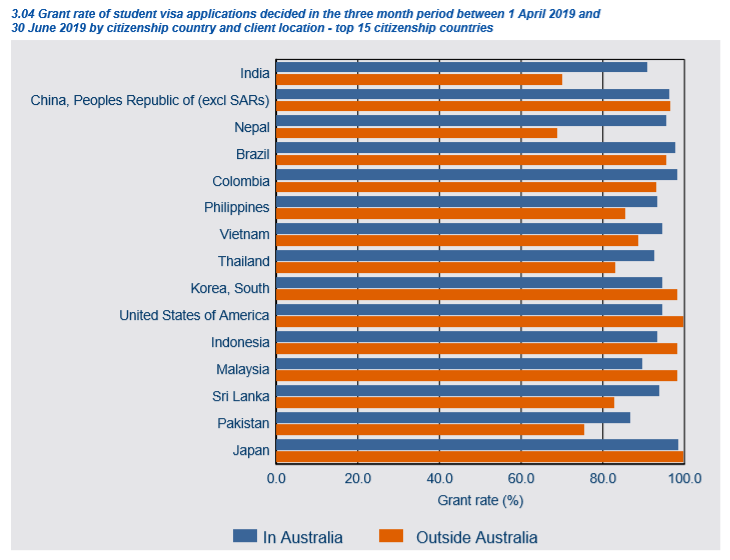
The number of Indian student visa applications on hand with the Department of Home Affairs has also ballooned over the past year, and dwarfs all other nations, even top placed China:
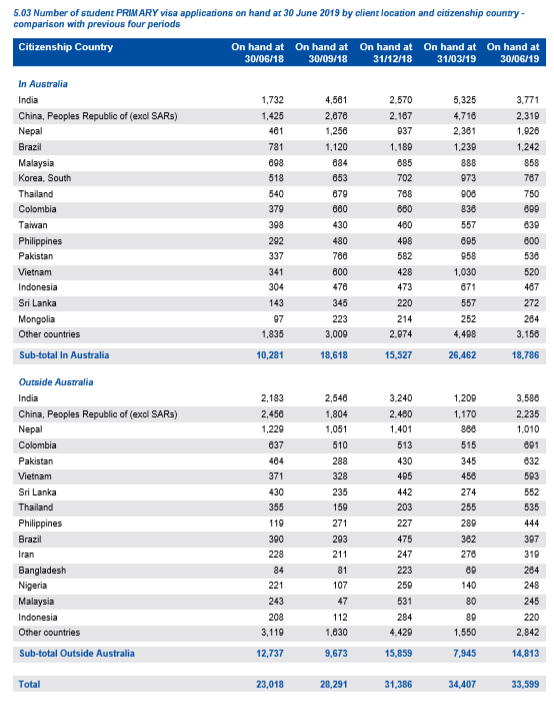
The next chart illustrates this discrepancy more clearly:
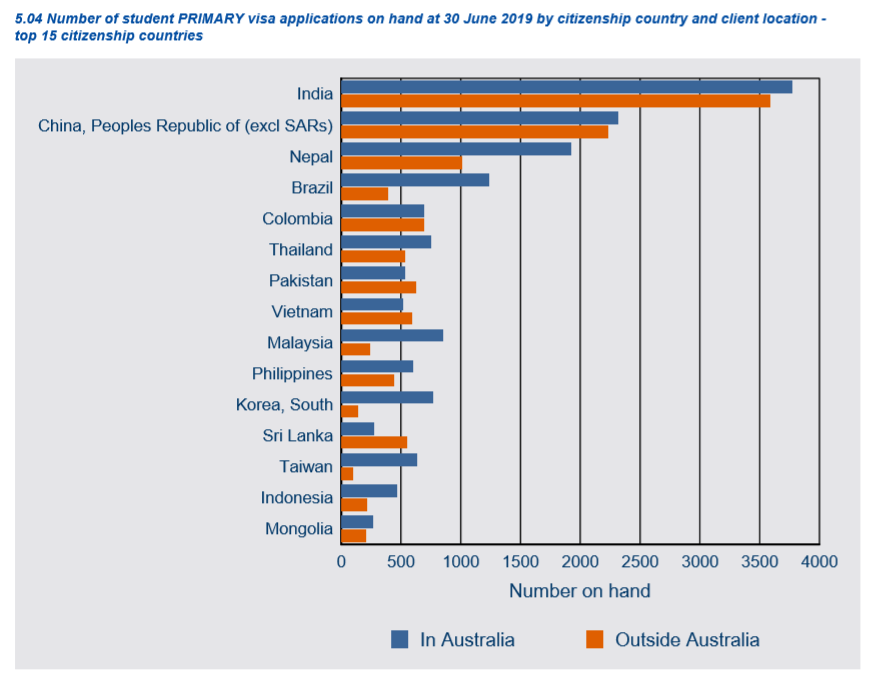
Many of these applications are likely delayed because they are considered to be high risk and warrant intense scrutiny from Home Affairs officials.
Indeed, May’s Four Corners expose on Australia’s international student industry was especially scathing of the quality of students coming from the Indian sub-continent, reporting widespread academic misconduct, plagiarism, and high failure rates.
The below correspondence from Murdoch University Professor, Benjamin Reilly, highlights the problems that have arisen from the strong growth in Indian students at Australia’s educational institutions, which has badly eroded pedagogical standards:
“In semester one 2018 we experienced a surge in new international students into some postgraduate courses. This surge increased sharply in semester two 2018, with several hundred new students, mostly from the Punjab region of India, enrolling in a small number of postgraduate courses.
“While some were OK, many do not have the language skills to study at a postgraduate level and have thus been unable to participate in class or complete assessments for the units legitimately.
“Hence we now have a much larger number of academic misconduct issues, supplementary assessments and outright failures than we have previously experienced in the units in which this cohort has enrolled”…
Fellow lecturer and academic misconduct investigator, Dr Duncan Farrow, reported similar problems with Indian students failing en mass:
“Perhaps the most telling statistic of them all: 48 of the 80 students admitted to the MIT in semester one this year had at least one academic misconduct finding against them,” he wrote.
“Not only was there a huge increase in numbers of misconduct cases but additionally the investigations were more difficult due to the poor language capabilities of many of the students involved.
“I have just reviewed the results for students from the Punjab region in BSC100 Building Blocks for Science Students and it is depressing. Of the 52 students in this category, 12 have passed the unit outright — a pass rate of less than 25 per cent.
Problems have also been identified by Immigration New Zealand, which recently reported a sharp jump in the number of high-risk student visa applications from India:
The majority of offshore student visa applications received by Immigration NZ since November last year have been high risk. Since November 2018, only 16 percent of the 3800 visa offshore student applications were deemed to be low risk…
Immigration New Zealand specifically singled out the northern states of India as being a high-risk market…
Of the applications being processed by the Mumbai office on April 3, 76 percent were deemed high risk (a total of 2773) and 22 percent medium risk.
The strong growth in international student enrolments has already badly eroded entry and teaching standards across Australia’s educational institutions.
There is the clear and present danger that pedagogical standards will be eroded even further as Australia continues to grow the number of lower-quality students from the Indian sub-continent in a bid to generate more fee revenue.

